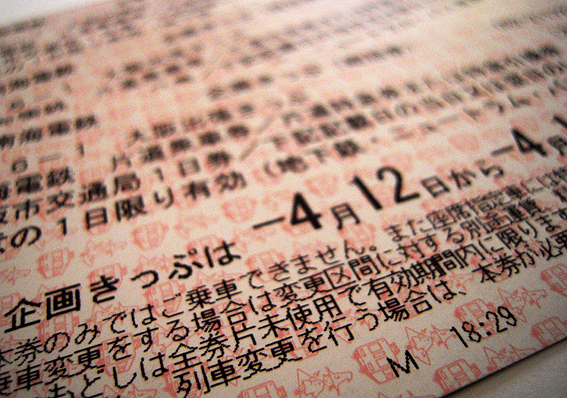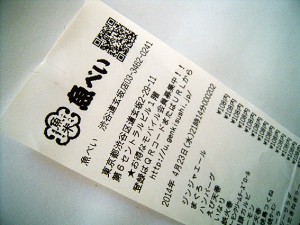To visit Japan is to enter a world of ephemera. From the first moment of arrival and the initial purchase of a train ticket, every transaction that follows serves to generate a seemingly endless supply of chits and vouchers, invoices and receipts, pamphlets, brochures and information sheets.
It’s like a flashback to a time, and a culture, when paper still played the dominant role as a carrier of information, when even the simplest of interactions involved the transfer of paper of some kind.
It’s not just the volume either. Many of the items are attractively produced, usually in colour, and it’s rare to see a slip of paper which doesn’t incorporate some sort of graphic component. Even the humble till receipts often include a design element, however simple, or perhaps a QR code which is maybe not so appealing but nevertheless eye-catching.
And when there isn’t anything specific, graphically, the bills still manage to look intriguing not least because of their ability to include tweeny-weeny text, barely legible and yet still figuring as marks on a page. I’ve written previously about the skill of the Japanese to print really tiny text very precisely and crisply.
Of course, there is a long tradition of Japanese calligraphy in which the brush stroke becomes a performance in its own right, indicative of a certain feeling and state of mind. It’s not unusual to see a till receipt echo this tradition with an imitation of hand-written lettering lending it a fake authenticity.
Maybe it is just the foreign-ness of the script itself which makes these scraps of paper appear more like mini-artworks than mundane notes, at least to my eyes.
Museums and temples are a great source of paper ephemera since the entry fee usually includes a distinctive ticket and an information leaflet. Some of these are very nicely produced indeed, as if every element of a visitor’s stay must be in harmony and executed to perfection, even for something instantly disposable.
This attention to detail and an uncompromising focus on standards is very much part of the Japanese character. In that sense, the print is no different to, say, an idyllic garden or a flawless bowl of noodles.
What it also highlights though is how irrelevant paper has become for many transactions in Western culture and how public institutions and companies are missing out on creating a positive experience for visitors and customers by ignoring it.




